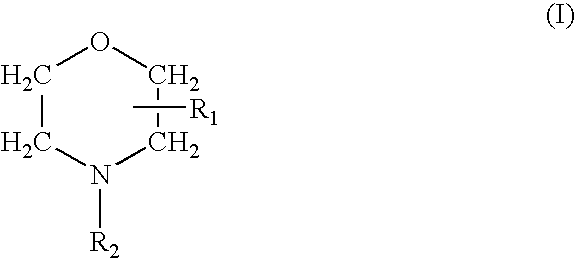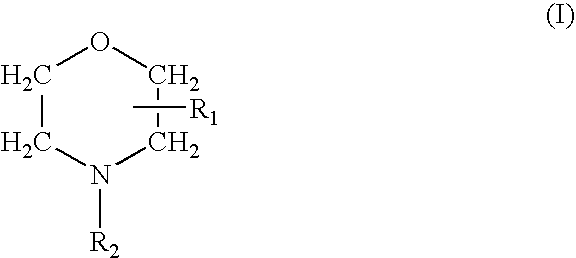Prevention of Bacterial Contamination
a technology for bacterial contamination and biofilms, applied in the direction of antibacterial agents, drug compositions, prostheses, etc., can solve the problems of product contamination, product contamination, energy loss and medical infections, and the overall density and complexity of the biofilms increase, so as to prevent or reduce prevent the formation of biofilms
- Summary
- Abstract
- Description
- Claims
- Application Information
AI Technical Summary
Benefits of technology
Problems solved by technology
Method used
Image
Examples
example
Test Surfaces
[0045]The following test materials were included in the study:
[0046]stainless surgical steel 316 (for e.g. heart valves)
[0047]titanium (for e.g. hip implants)
[0048]The different materials were obtained as discs with an approximate diameter of 30 mm and a thickness of 1 mm. These discs were then mounted in the bottom of Petri dishes
Test Compound
[0049]Delmopinol hydrochloride, was dissolved in water of UHQ grade to a concentration of 20 mg / mL (2% w / v). The solution was stored in the dark at room temperature until use.
Treatment of Test Surfaces with Delmopinol
Procedure A: The test surfaces were treated with 2 mL of the 2% aqueous solution of delmopinol HCl and left unstirred for 15 minutes at room temperature. All delmopinol solution was removed with a pipette. The wells were then thoroughly rinsed three times with 4 mL of a potassium phosphate buffer, 10 mM, pH 7.2. Since the pKa of delmopinol is 7.1, a substantial part of the compound will be converted to its base, which...
PUM
 Login to View More
Login to View More Abstract
Description
Claims
Application Information
 Login to View More
Login to View More - R&D
- Intellectual Property
- Life Sciences
- Materials
- Tech Scout
- Unparalleled Data Quality
- Higher Quality Content
- 60% Fewer Hallucinations
Browse by: Latest US Patents, China's latest patents, Technical Efficacy Thesaurus, Application Domain, Technology Topic, Popular Technical Reports.
© 2025 PatSnap. All rights reserved.Legal|Privacy policy|Modern Slavery Act Transparency Statement|Sitemap|About US| Contact US: help@patsnap.com



